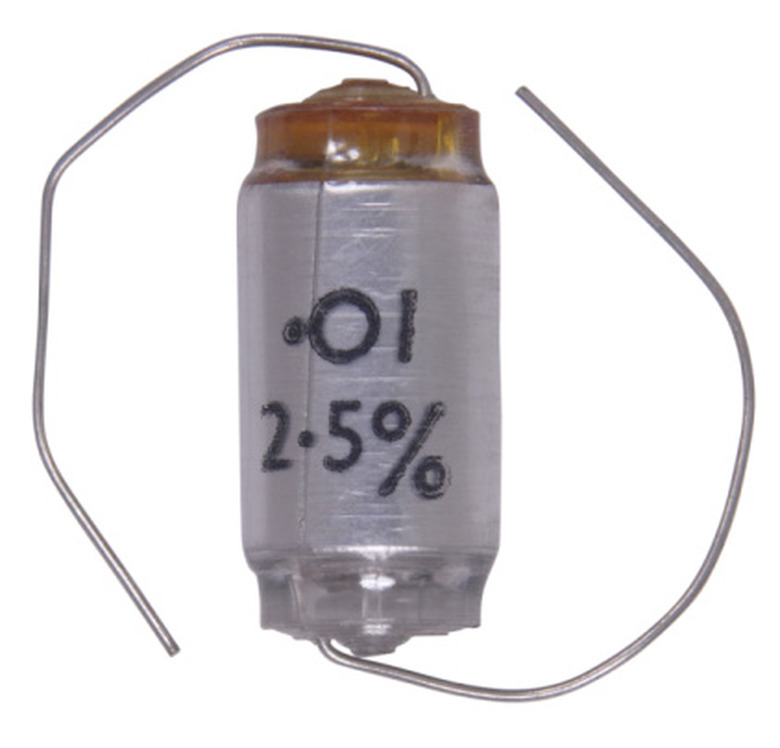DIY Homemade Large Capacitor
A large do-it-yourself capacitor requires attention to detail for successful construction. One type of large capacitor is a paper and metal foil capacitor. A paper and metal foil capacitor basically consists of layered strips of paper and aluminum foil rolled tightly into a cylindrical shape with two wire leads attached to the innermost and the outermost metal foil layers. The capacitor works by storing charges on the layers of metal foil. The layers of paper act as barriers between the layers of foil. The crucial point of construction is ensuring that the layers of metal foil do not touch each other, resulting in a short circuit.
Step 1
Cut seven strips of wax paper, 36 inches long and 6 inches wide. Cut seven strips of aluminum foil, 35 inches long and 5 ¾ inches wide. Cut two 4-inch lengths of copper wire.
Step 2
Lay one strip of wax paper on a flat surface and center one strip of aluminum foil over it. Using transparent tape, tape one copper wire lead to the upper right corner of the first layer of aluminum foil. The copper wire should overlap the top edge of the foil by 1 inch with the remaining 3 inches above the foil.
Step 3
Lay a strip of wax paper over the first layer of foil. Lay the remaining strips of foil and paper in alternating layers. Using transparent tape, tape one wire to the lower left corner of the last strip of aluminum foil. The copper wire should overlap the bottom edge of the foil by 1 inch with the remaining 3 inches below the foil.
Step 4
Starting at either end, roll the layers as tightly as possible from one end to the other. Wrap transparent tape around the rolled paper/foil cylinder to prevent unwinding of the roll.
Step 5
Light a candle and drip melted wax over both ends of the paper/foil roll to seal the ends. The paper/foil capacitor is ready for charging via its copper leads.
Things Needed
- Wax paper
- Aluminum foil
- Solid copper wire
- Transparent tape
- Candle
TL;DR (Too Long; Didn't Read)
Ensure that the smaller aluminum strips are centered over the larger wax paper strips. This will prevent the aluminum strips from touching and shorting out the capacitor.
Warning
Charged capacitors can provide a lethal shock. Stand on a rubber mat for protection whenever handling a charged capacitor.
References
- "The Voice of the Crystal"; H. Peter Friedrichs; 1999
Cite This Article
MLA
Boyer, Timothy. "DIY Homemade Large Capacitor" sciencing.com, https://www.sciencing.com/diy-homemade-large-capacitor-8563150/. 24 April 2017.
APA
Boyer, Timothy. (2017, April 24). DIY Homemade Large Capacitor. sciencing.com. Retrieved from https://www.sciencing.com/diy-homemade-large-capacitor-8563150/
Chicago
Boyer, Timothy. DIY Homemade Large Capacitor last modified March 24, 2022. https://www.sciencing.com/diy-homemade-large-capacitor-8563150/
